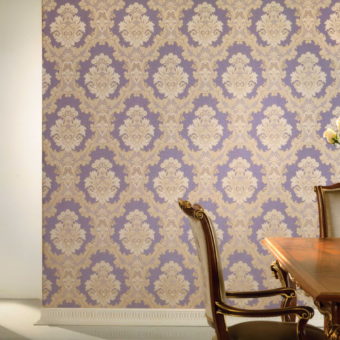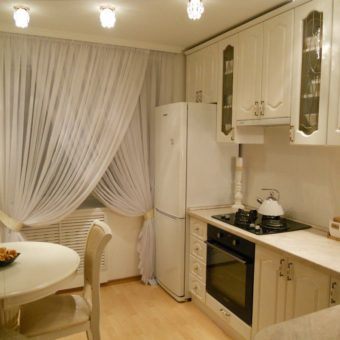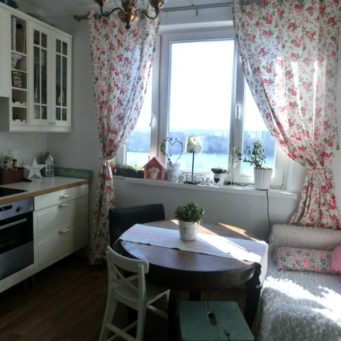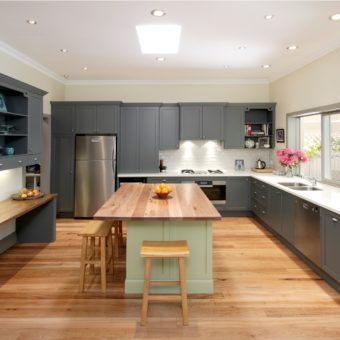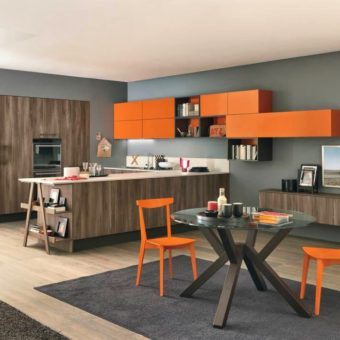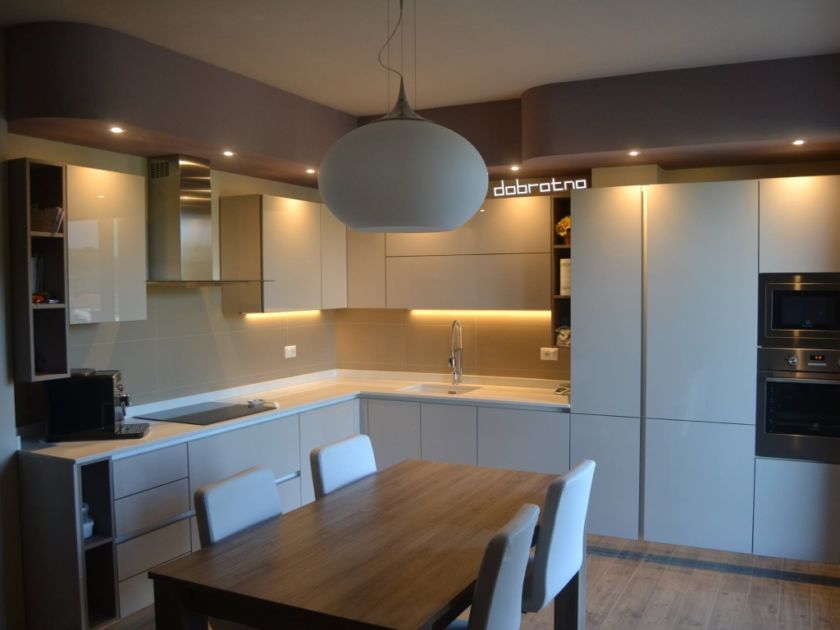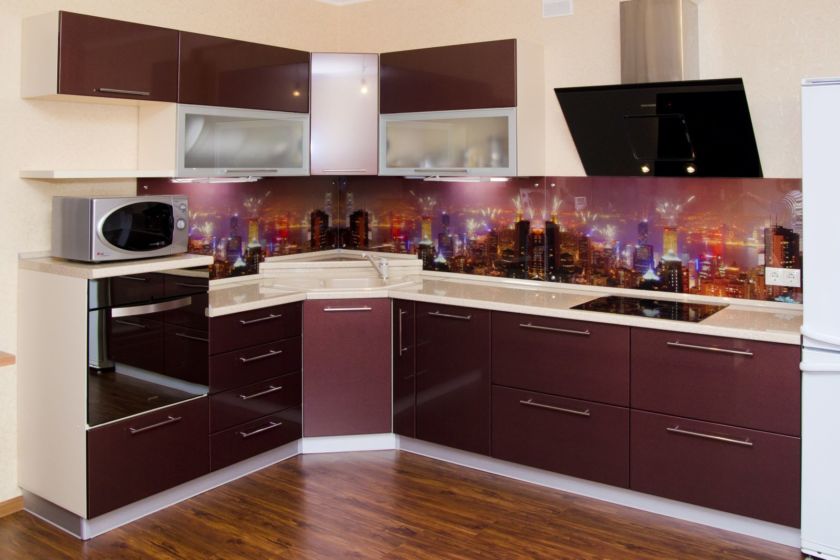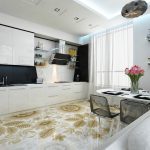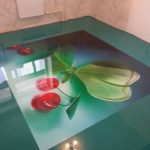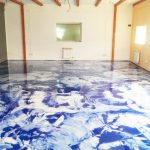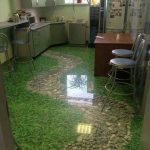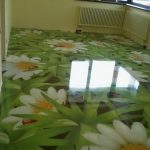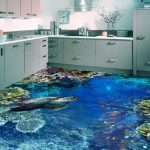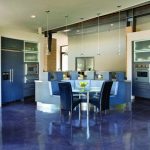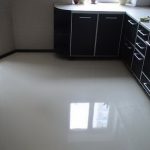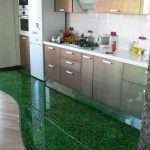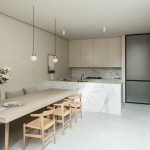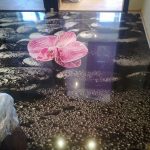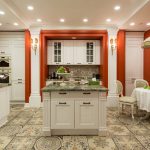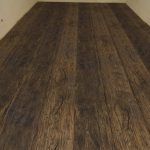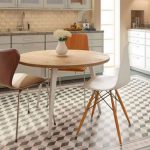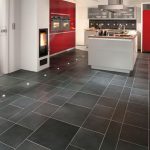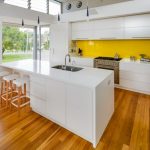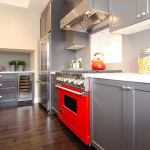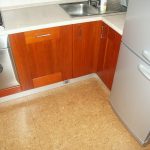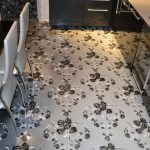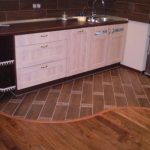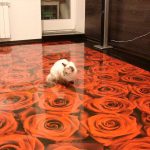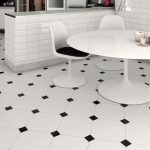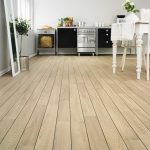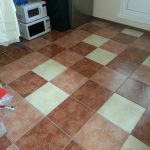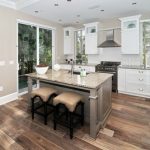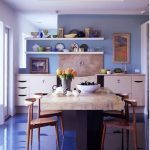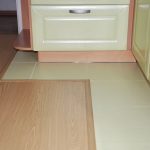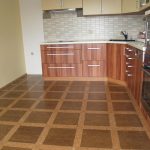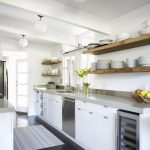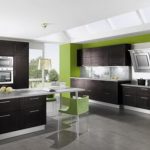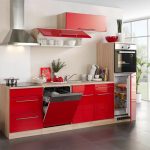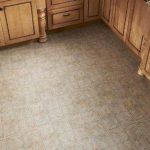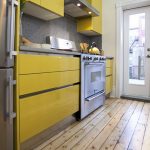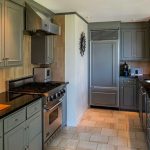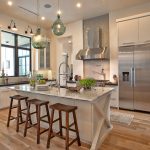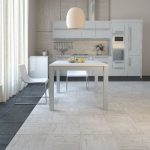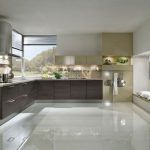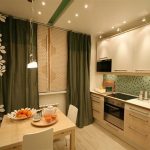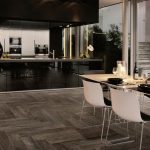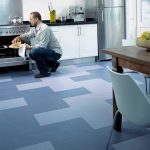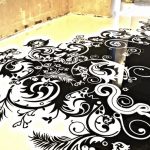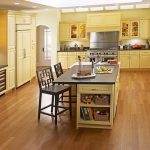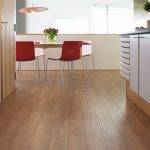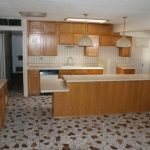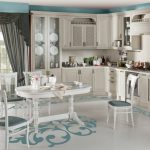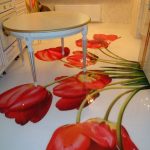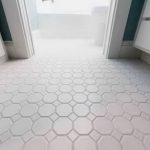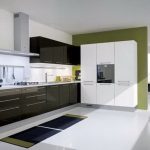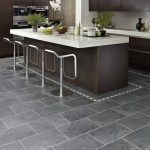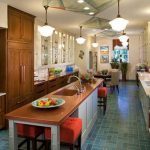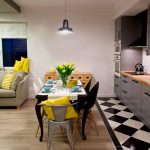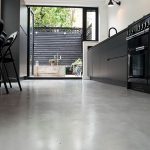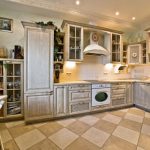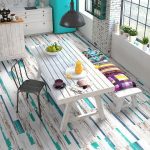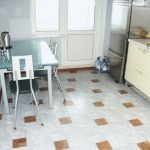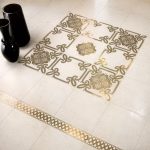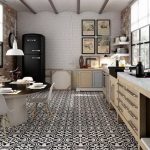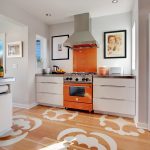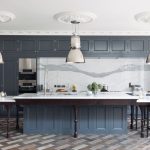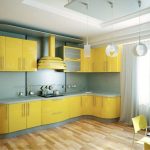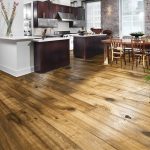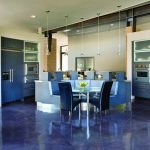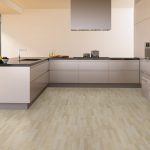The best kitchen flooring options
The question of which floor is best done in the kitchen - takes a leading place in the repair. The dining room is a humid room, with constant exposure to fats, high temperatures and patency. Unlike a living room or bedroom, an inexpensive laminate or cheap linoleum cannot be put in the kitchen. You need to choose carefully, comparing the characteristics of individual materials.

What to rely on when choosing a coating
The kitchen is the most visited place in the apartment. It is necessary to take into account factors such as high humidity, constant temperature changes, mold, the number of people living in the apartment. The following criteria are put forward for flooring:
- Resistance to high humidity. In the kitchen, constant contact with water cannot be avoided. In addition to indirect effects, such as evaporation during cooking or spray from the hob, there is a direct one - mopping. Due to the greater contamination, it is necessary to regularly clean, which can adversely affect the coating material.
- Hygroscopicity. For the kitchen, the coating should be inert and not hygroscopic, since water permeability will lead to the colonization of bacteria and fungi. The ability to absorb water is characteristic of cheap wood-based materials, like a low-grade laminate.
- Impact resistance. In the dining room, something constantly falls to the floor. Heavy pans, knives, forks can cause irreparable damage to the coating. Given this factor, some types of floors will not work.
- Slippery. If grease or water gets on the floor, it can cause personal injury. Some materials allow liquids to spread easily on the surface. It is important that the coating adheres to even the oil film.
- Wear resistance. Daily, many-hour stay of people in the dining room leads to a quick deterioration of the lining. Oil and water can corrode and spoil, for example, wood. Stubborn stains can only be removed with a brush with powerful oxidizing agents, for which the flooring may not be ready.
- Resistance to temperature difference. When installing a warm floor, you need to consider this factor. An unstabilized tree often shrinks, expands, from which the planks of a laminate or parquet can rise up.
- Design. Depending on the desired effect.
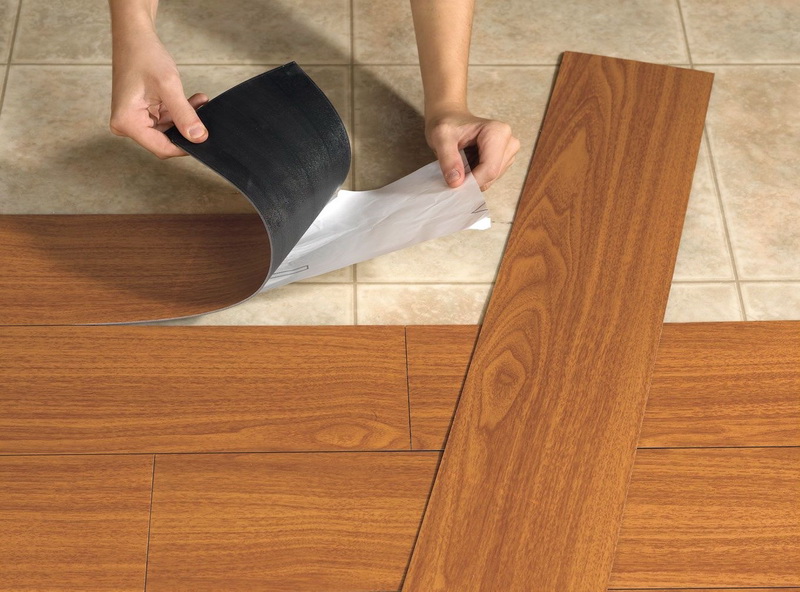
About screed and insulation
To repair lasted longer - you need to make an even screed. In Khrushchev, the floor is rarely even. It was made using the most primitive technology of cement and sand. Frequent imbalance and speed work is noticeable immediately after dismantling the flooring. Huge sinks, elevations, cracks and construction debris are a poor substrate for the new lining.

If the screed is made using this technology, it must be replaced first. This is especially important for coatings such as parquet, laminate and linoleum. The board will not be able to lie flat and there will be noticeable peaks. Roll coatings bend around pits and rises, which makes them more visible.
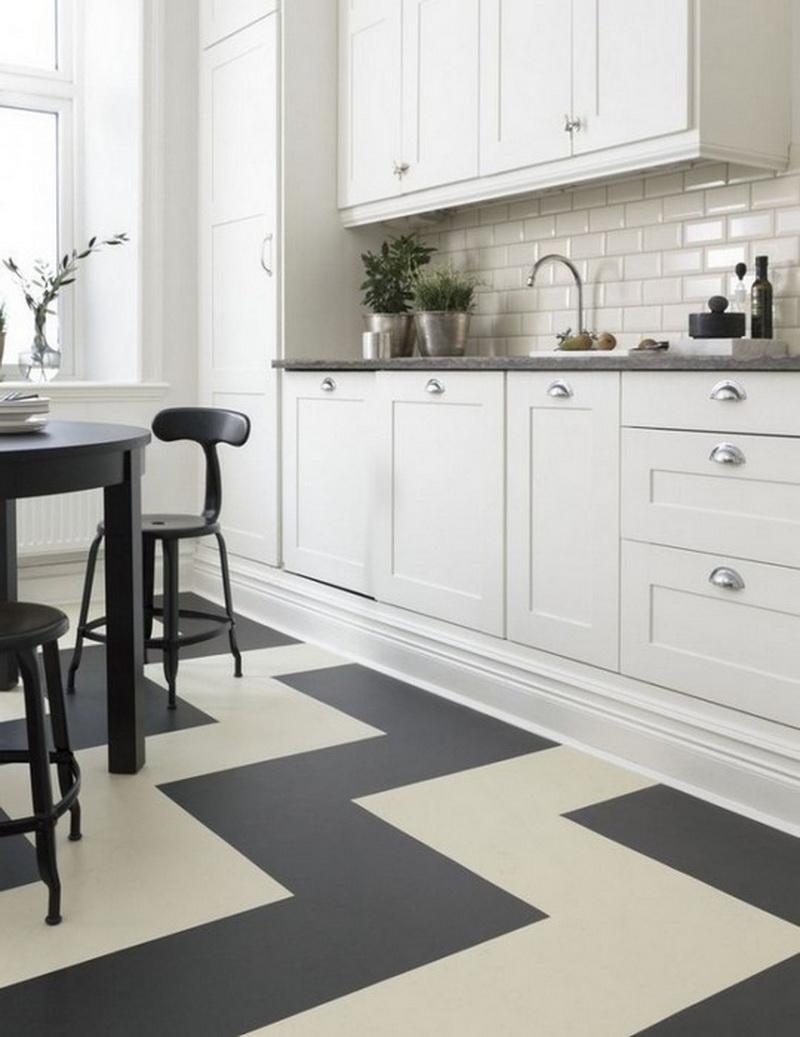
For this reason, the screed must be redone from scratch. For each material, it is better to apply a specific composition. What is better to make a substrate for:
- Tiles Ceramic panels are solid and even, so they do not need a high-tech substrate. A standard cement screed is suitable, but it must be flat. At the joints, any irregularities will be noticeable.
- Laminate flooring, cork. For a wooden floor, it is not advisable to fill in high screeds. In old houses, with the exception of stalinok, the ceiling is low and the extra 5 centimeters of height radically change the room.Therefore, a self-leveling liquid or a dry substrate is better.
- Linoleum. Since the roll materials are very thin, but wear-resistant, there is only one requirement for the substrate - evenness. Any distortions and depressions will immediately be noticeable.
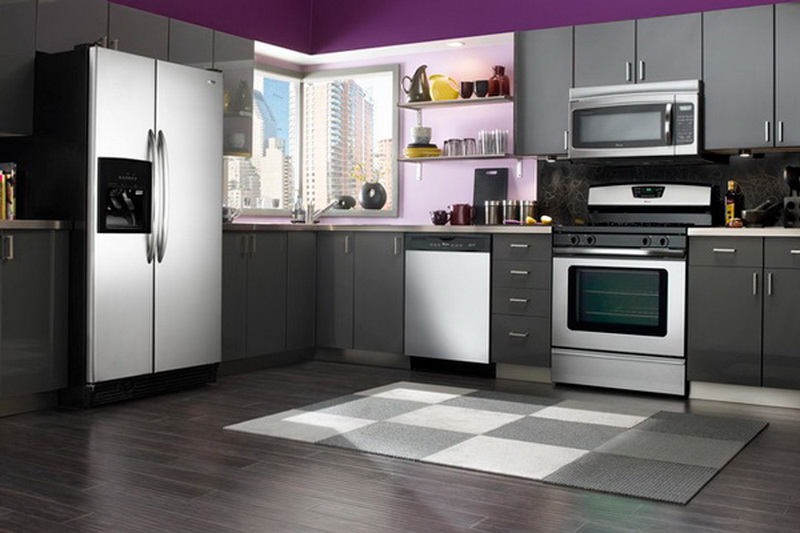
Mineral wool, polystyrene foam, foam lining are used as insulation. They are universal, suitable for all types of cladding.
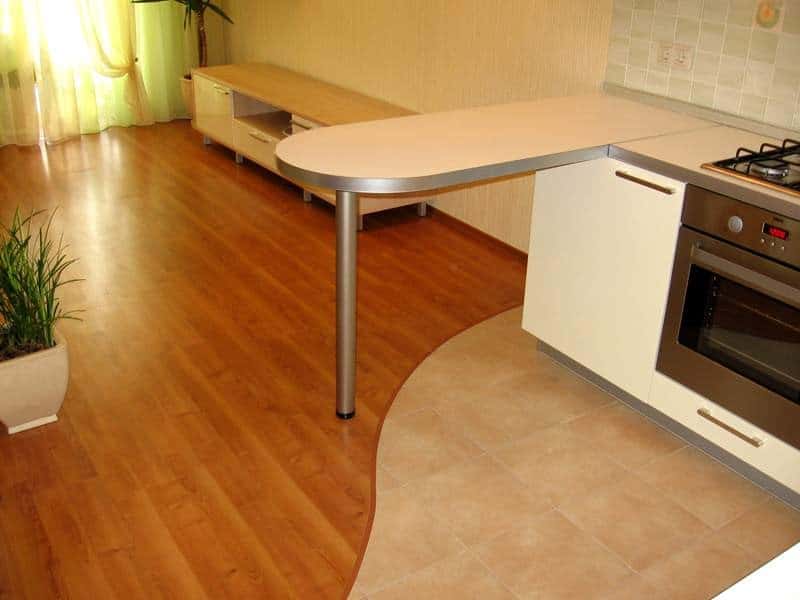
For active insulation, like infrared panels, pipe gaskets or cable, you need to choose the appropriate material. Wood, especially poorly stabilized, does not like direct heating and often shrinks. In this case, acrylic casting, linoleum or ceramic tiles are better.
Not every screed can be used with a warm floor. Standard sand-cement is cracked by active heating. Therefore, you need to use only those mixtures that are designed for this technology.
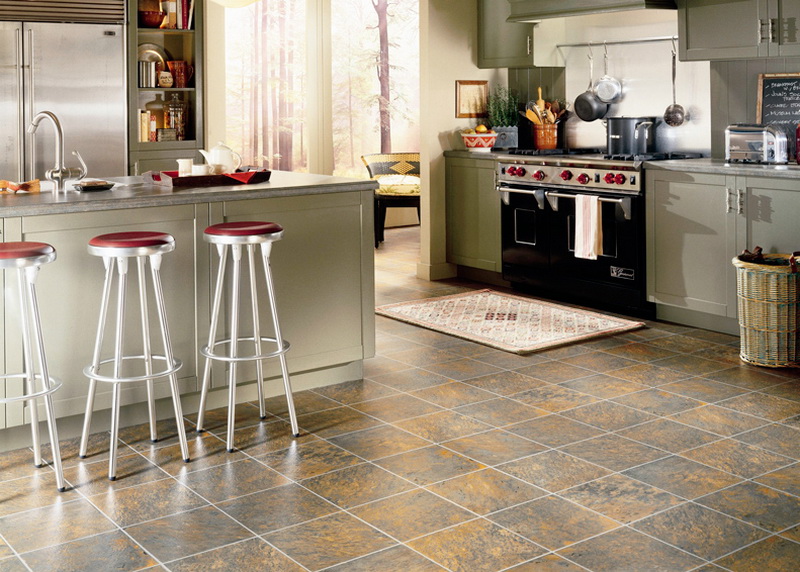
Key Features of Popular Flooring
Ceramic tile
Kitchen tile on the floor is the most popular material at the moment. Smooth, durable, immune to various types of chemical and mechanical damage. Its only drawback is the low temperature at any time of the year. It is uncomfortable to stand on her bare feet, so it is advisable to install an active insulation. Since the tile is not prone to chips from temperature, infrared panels, cable, various types of pipe laying are suitable.
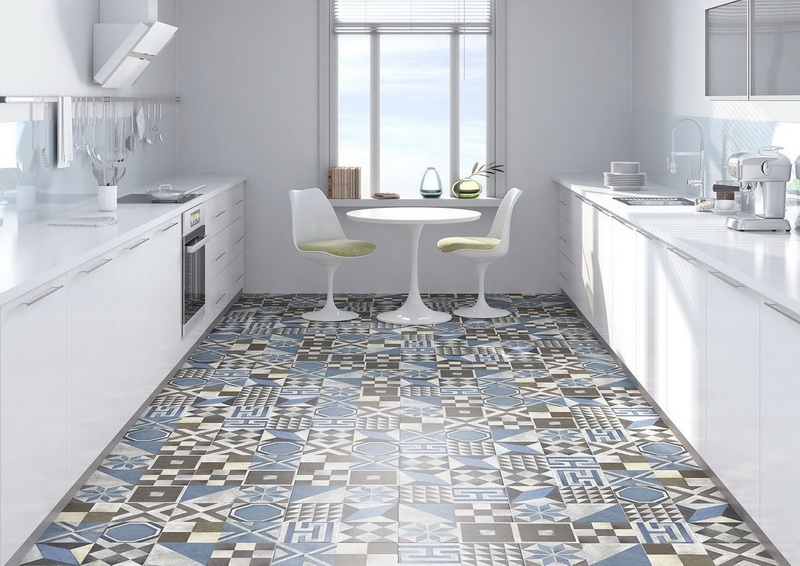
Before buying, you need to study the characteristics of the material, which will make it clear its capabilities and approximate life.
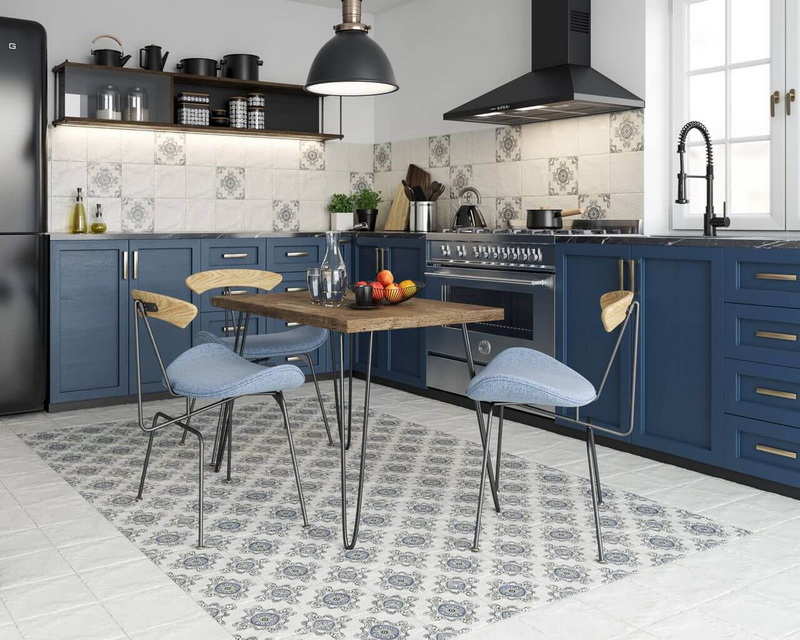
The first factor requiring attention is the wear resistance class. It is denoted by the abbreviation PEI and the Roman numerator, which indicates the degree of strength:
- Suitable for wall decoration, but cannot be used on the floor.
- Low-grade tile with a low degree of hardness. Suitable for coverings in bedrooms, bathtubs and other rooms with low traffic. On such a surface it is not advisable to walk in shoes with a hard sole, as scratches may appear.
- The middle class, which is allowed in laying in any room, with the exception of the hallway. The tile has a low abrasion resistance, so walking on it in shoes is not recommended.
- High-strength tile, which is allowed for installation in rooms with high traffic, public institutions and kitchens. They are not afraid of shock, damage and even targeted mechanical impact.
- Tile of exceptional stability. It is used for laying floors in shops, cafes, and palaces of culture.
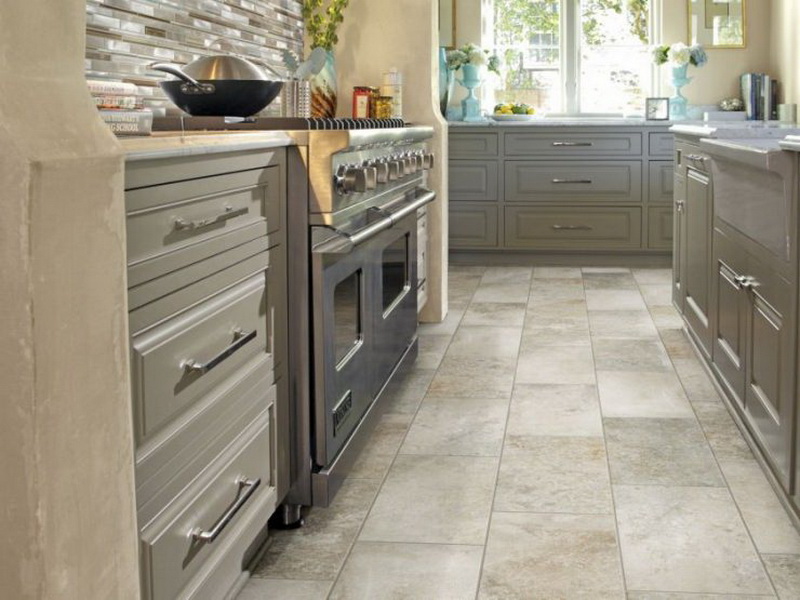
For an apartment or a private house, the third wear resistance class will be the best tile for the kitchen on the floor.
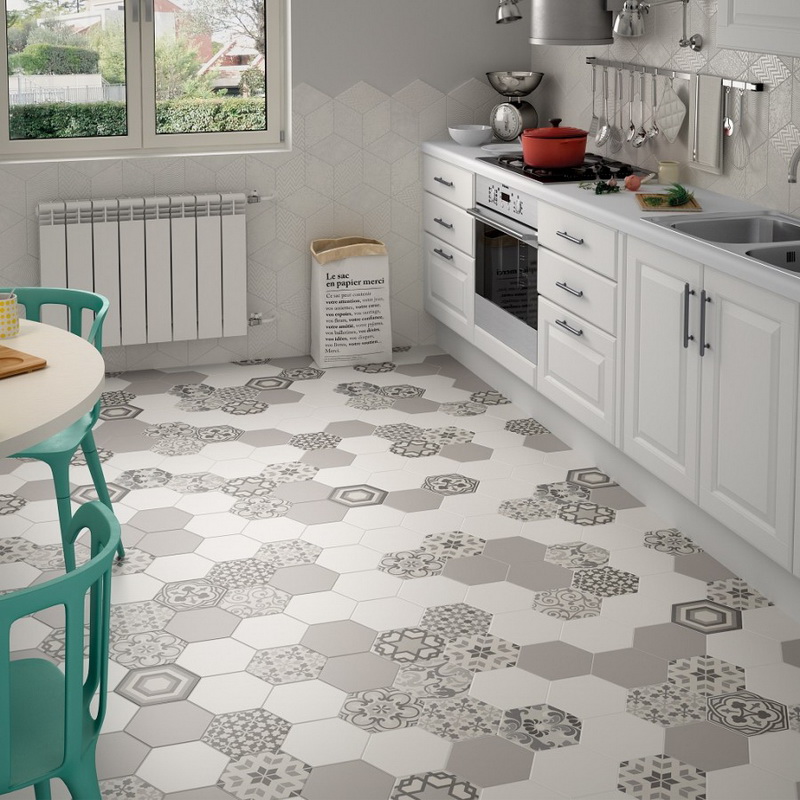
Pottery is not afraid of water and fat. The top decorative coating does not allow moisture to be absorbed. Oil stains do not penetrate the tile structure and do not spread over the surface. You can wash by any means, including acid.
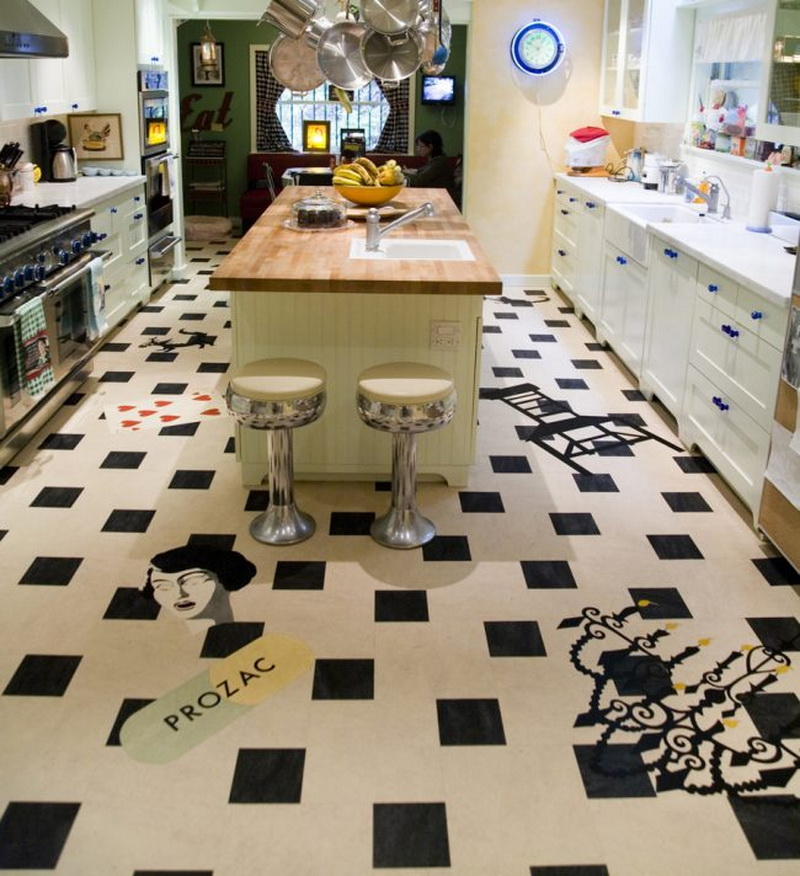
There are hundreds of designer coatings that imitate stone, wood, metal and even wool.
Linoleum
A versatile material that confidently occupies a leading position in the TOP of kitchen flooring. Available for sale:
- Synthetics. A popular roll cladding made on the basis of plastic (most often polyvinyl chloride), which serves from 10 to 15 years. Plastic is safe for health, not afraid of moisture and fat. When the temperature rises, it does not release toxic substances into the atmosphere.
- Bung. Natural linoleum or marmoleum is a natural fiber made from balsa wood, lime powder, and linseed oil. The service life of such a coating is at least 25 years. Additionally, natural fibers create heat and sound insulation.
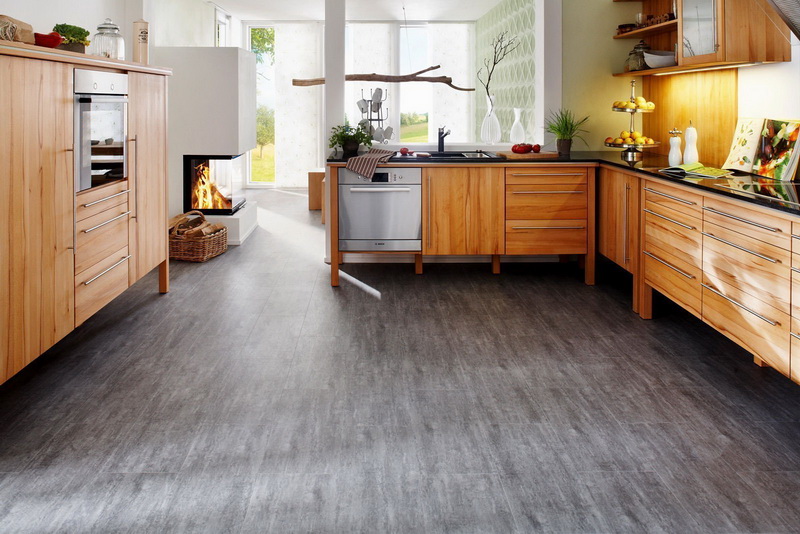
Laminate
Young flooring imitating natural wood. In fact, this is a wood chipboard with a top laminate.It is worth noting that the floors in the kitchen from this material are not recommended by builders and designers.
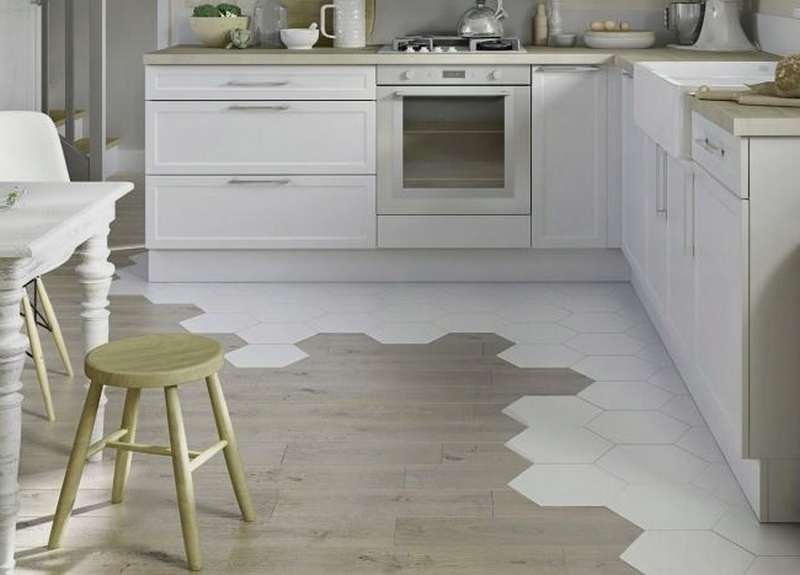
Despite the attractive design and reasonable price, the laminate is prone to absorb moisture quickly. At the top of the panel is decorative paper with a wood pattern, covered with a laminated layer. Direct water hit is not scary for him, but unprotected joints are under attack. Experienced builders recommend producing a layer of joints with moisture-resistant substances. For protection, it is better to use sealants, like sanitary silicone. It additionally glues the canvas and will not allow water to penetrate inside. Its drawback is high viscosity, due to which it flows through the joints.
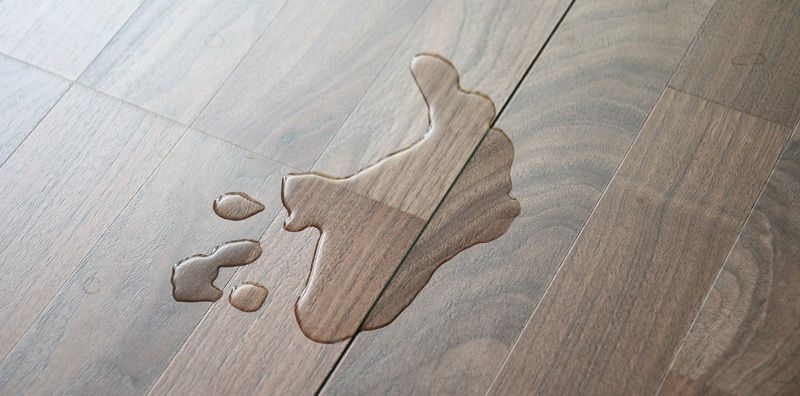
A safer option is PVA adhesive labeled D4. This is a waterproof composition that does not come out, after drying it becomes transparent and does not connect the planks to each other.
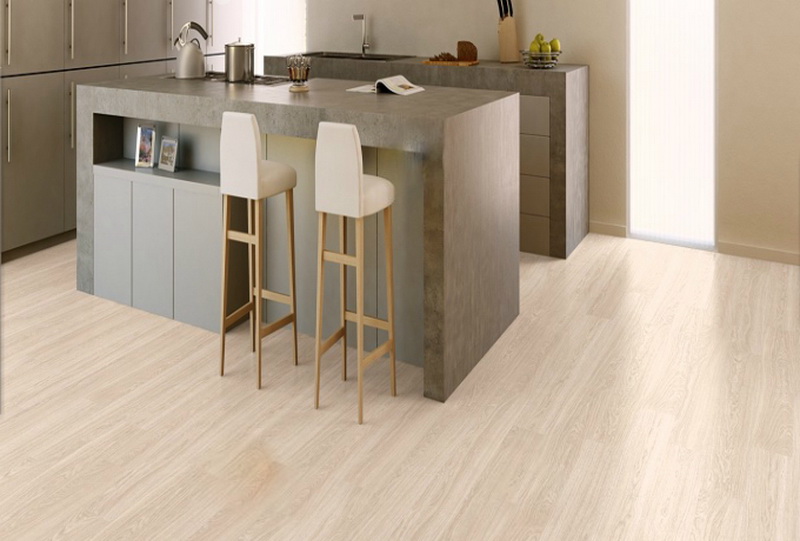
Laminate Benefits:
- Large selection of colors. At its price, a laminate can imitate any wood. Including, it can be an American nut, hornbeam, palm.
- Easy installation. All planks are connected using a spike groove technology. It is impossible to miss or unevenly put the coating.
- A minimum of tools. You do not need to use a special tool for styling. For cutting, a hacksaw, a saw blade or an electric jigsaw are suitable.
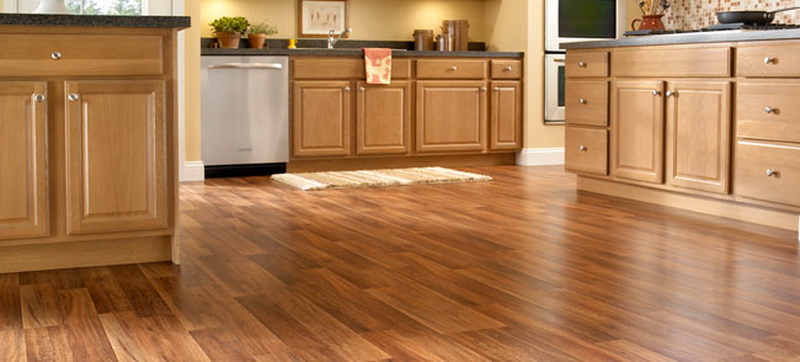
Some types of laminate flooring can be laid on underfloor heating. The packaging must have a corresponding mark on the approval of active insulation.
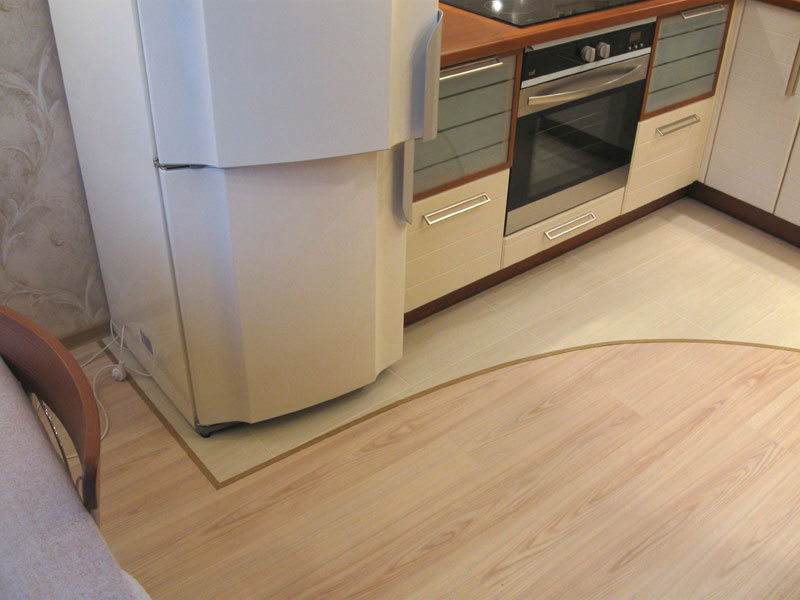
Wooden floor
Wood is an old flooring material. Parquet boards were previously popular both in palaces and in ordinary houses. The difference was only in their quality.
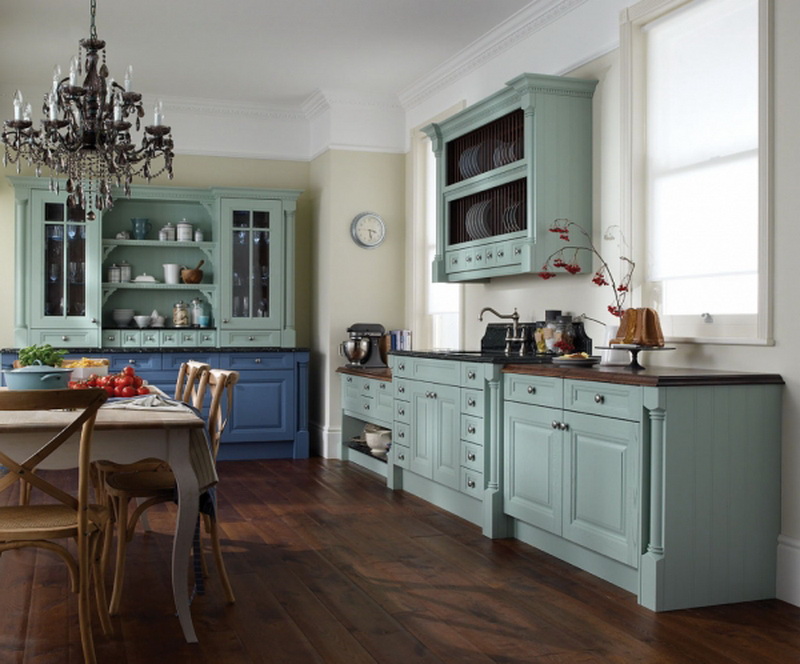
Now natural wood is also actively used as flooring. Many people prefer parquet imitation, because:
- The tree is moody. Parquet board is covered with a layer of varnish or oil, which is washed for 5-10 years. After you need to carry out looping.
- High hygroscopicity. After erasing the varnish, the active absorption of moisture from the air begins. At the place of breakdowns, dark spots appear that need to be removed with a plane.
- Requirements for waterproofing. You can’t put a tree on a concrete screed, as it will begin to become covered with moisture, and this is a good environment for the development of bacteria and fungi.
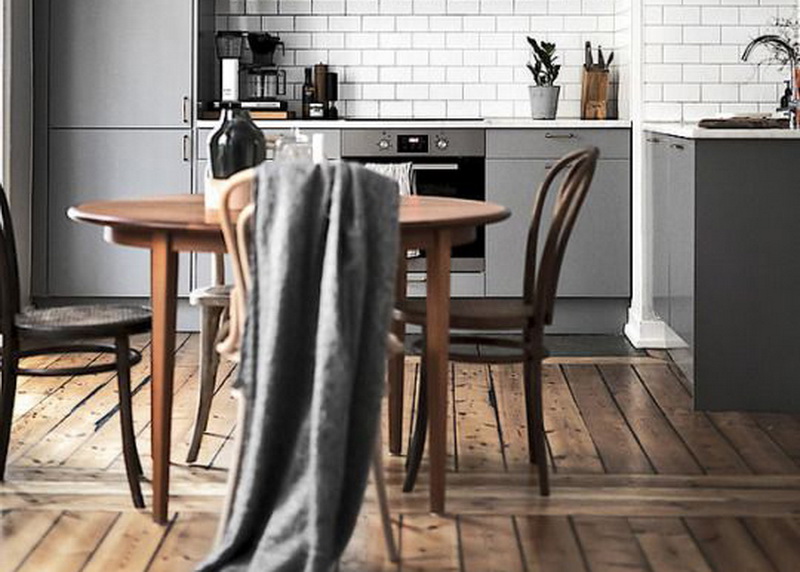
But, in return for this inconvenience, the parquet will give warmth and comfort. On sale there are many different types of wood for laying, such as oak, walnut, ash, beech, red and black wood. That is, you can get a unique room design.
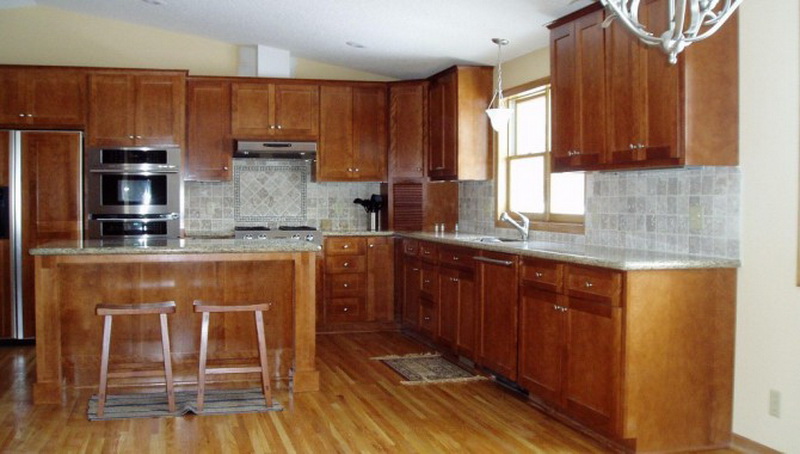
As a cover for the kitchen, parquet can be used. But, in this case, it must be impregnated with oil, not varnish. The oil will protect the tree from moisture and grease, which constantly fall on the floor.
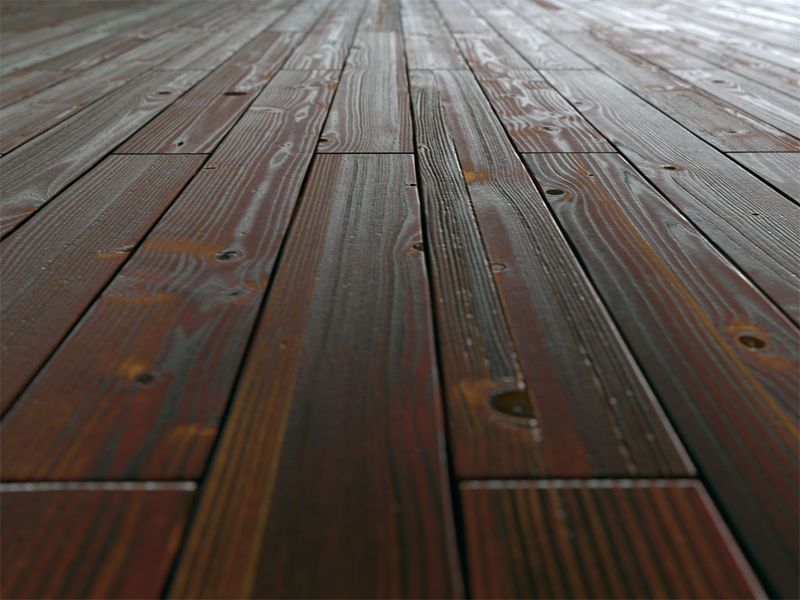
To avoid damage to the board from falling pots or cast-iron pans, it is better to buy hardwood flooring, such as ash.

Cork flooring
Cork is a less popular material for floors, due to the high price and complexity of installation. However, it has several positive qualities:
- Sound insulation. The cork has a porous structure, that is, it is a natural acoustic foam rubber. It has low thermal conductivity and does not take cold outside.
- Stability. Unlike parquet, you need to cycle and re-cover the cork less often.
- Hygiene From high humidity does not rot wood. Toxic substances do not enter the atmosphere.
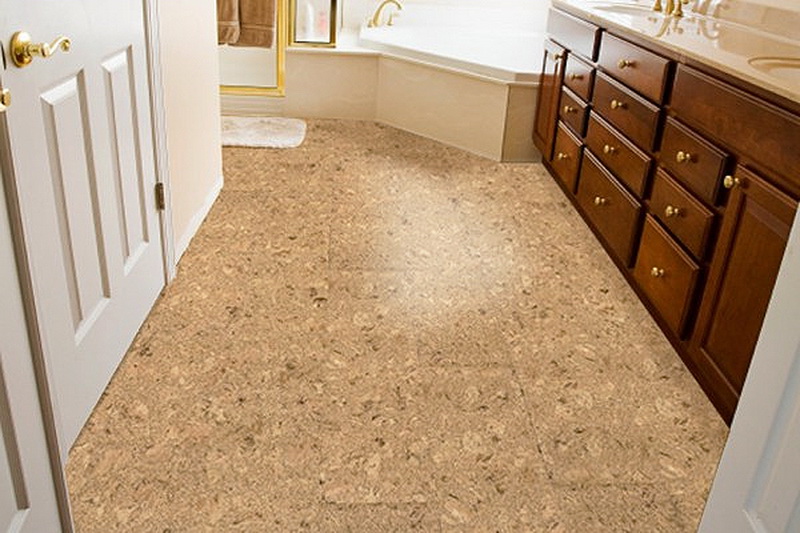
However, in the kitchen this material is better not to use.The cork is soft, it will rinse when hit with a frying pan. Damage can be repaired with a steamer followed by varnishing.
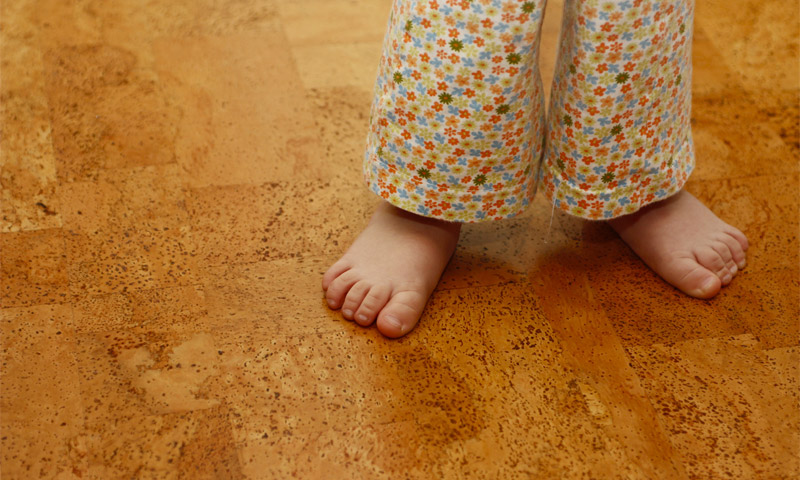
Self-leveling floors
Polymerase coatings - a modern approach to the arrangement of floor coverings in the room. Often they are called liquid linoleum.
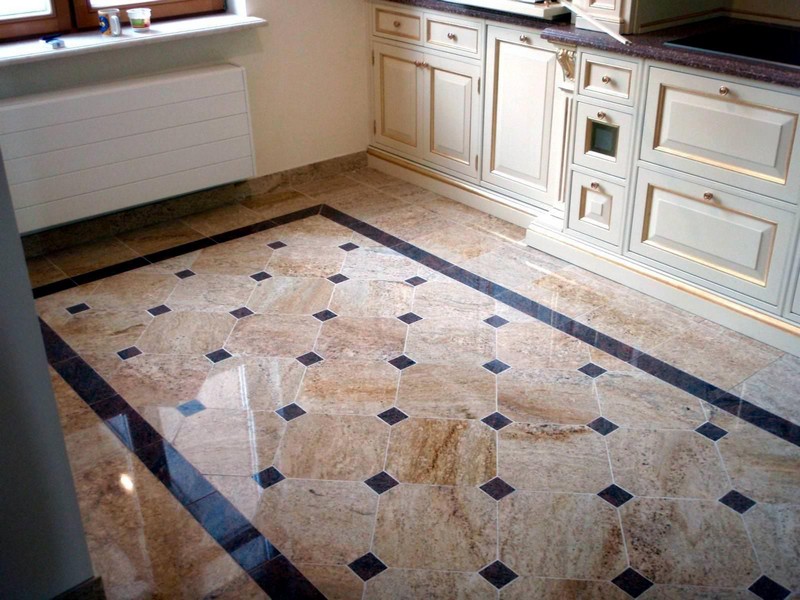
The composition has a high price and is difficult to install, but its advantages overlap the negative sides:
- Durability. Among all synthetic and semi-synthetic materials, ZhL has the greatest term of operation. With careful use, it will last more than 40 years.
- Design. Such fluids have no uniform design. Therefore, the owner of the house can independently decide what exactly he wants to see on his floor.
- Resistant to moisture and grease. The polymer has no pores, does not absorb liquid and does not dissolve from oil. In addition, good sound insulation is provided.
- Universality. For such a floor, it does not matter how smooth the screed is. Moreover, even with the next repair, it can not be dismantled and left. A perfectly flat plane allows you to use it in any conditions.
- Environmental friendliness. As the basis used polyurethane or epoxy resin. These are safe materials that do not release toxins into the atmosphere. When overheated, they simply melt, unlike linoleum.

Beautiful design with liquid linoleum is presented below in the photo.
Parquet
A good analogue to parquet is an ordinary deck board. It is used in construction for cladding facades, in the construction of baths and saunas. The deck is made specifically for harsh conditions, which is what is required from the flooring for the kitchen.
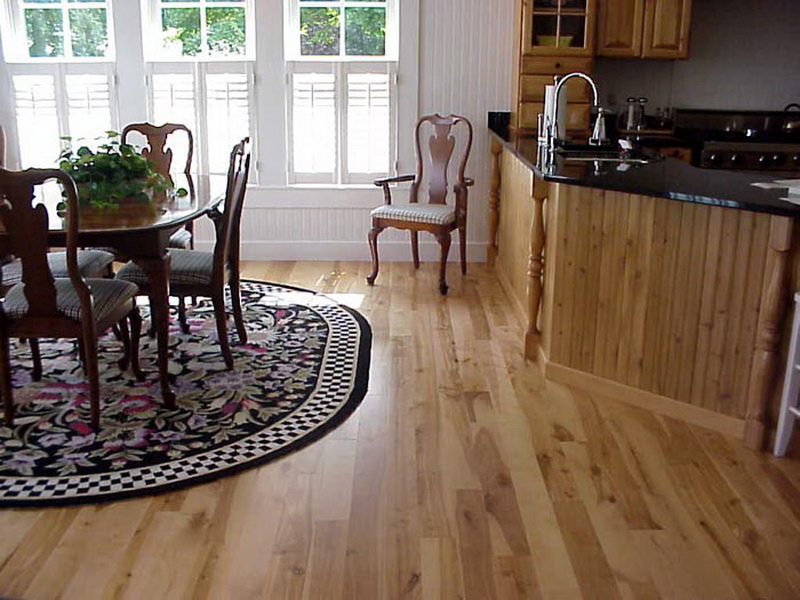
In the flooring, the board is much lighter than parquet. It goes in large layers, up to 3 meters long. It is installed on any flat surface, like concrete, cement or self-leveling floor.

It is sold already cycled and treated with varnish or oil. For installation, you only need to connect it using the tongue-and-groove technology. For better fixation, you can install them on bitumen mastic.
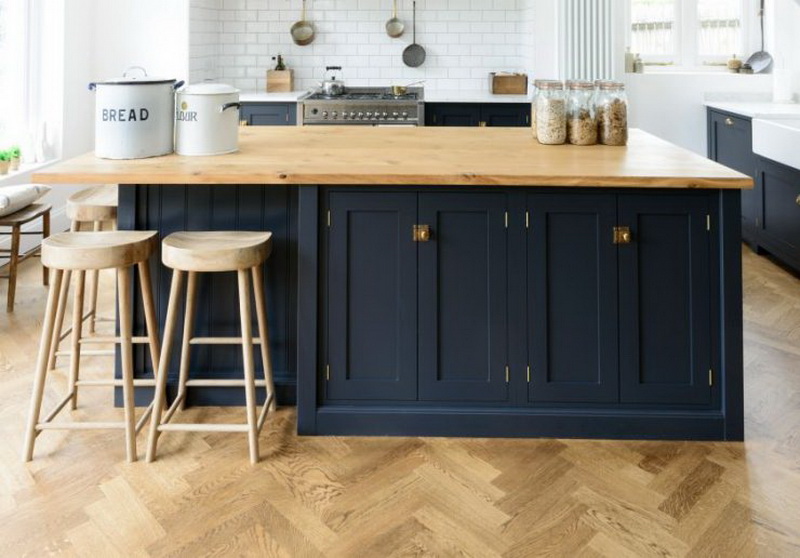
The deck is not susceptible to hot fat. It is made of different types of wood. For the kitchen, it is better to take oak or ash, which can withstand damage from a pan. It is acceptable to use a warm floor, as the board can work in extreme conditions. Not afraid of moisture, even direct exposure to water.
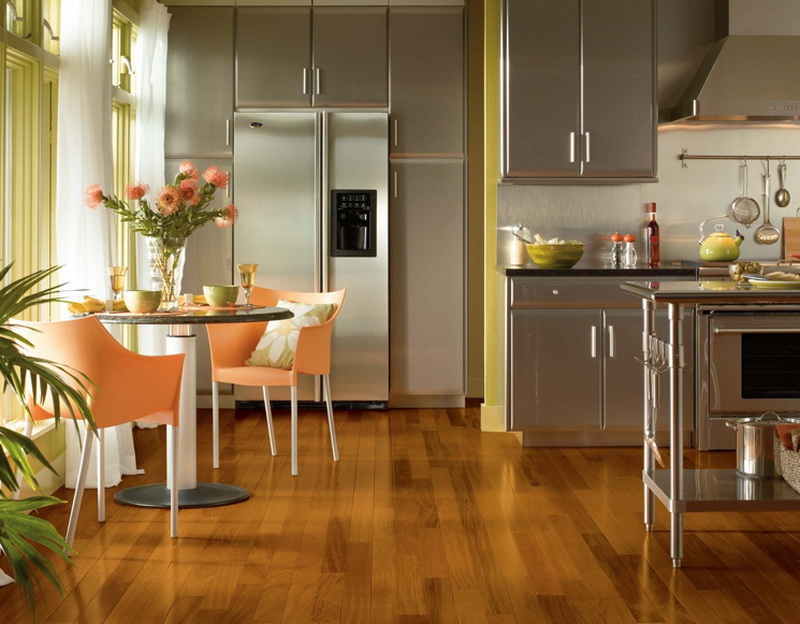
Outrageous solution: polymer bulk floor
Self-leveling floors are an aesthetic solution popular in author's interior design. It is made from various polymers like acrylic. After hardening, the composition becomes immune to heat, grease, moisture and even shock. In case of damage, it can be repaired.
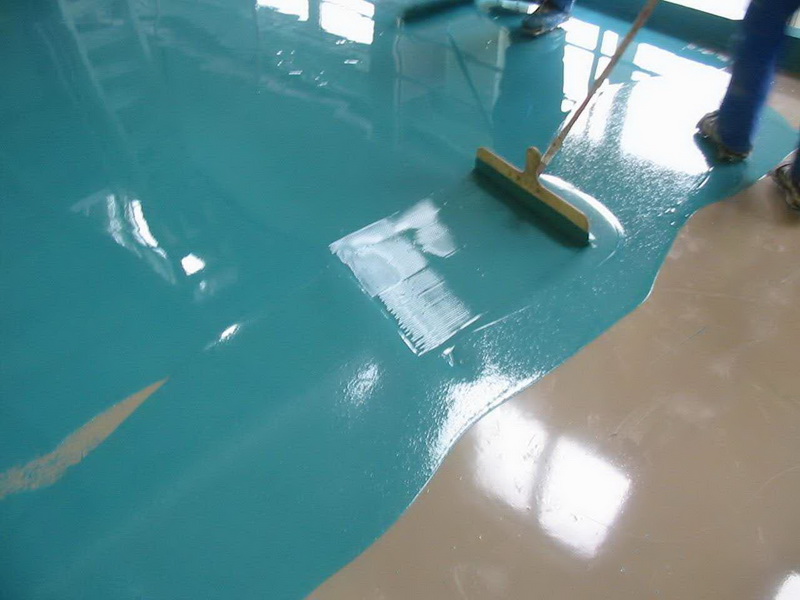
Under the bulk layer, you can pour natural gravel, marble, figurines. It is possible to make a full-fledged diorama. Often, designers make the effect of a natural beach with sand and shells.
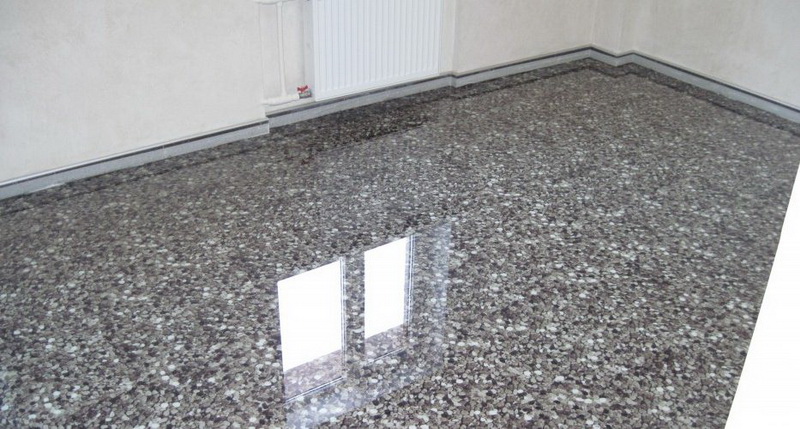
But there are a number of disadvantages:
- High price. The polymer is expensive, and filling the floor in the kitchen for 5-10 centimeters requires several gallons of the composition.
- The complexity of the fill. It is almost impossible to independently apply, therefore it is required to call builders.
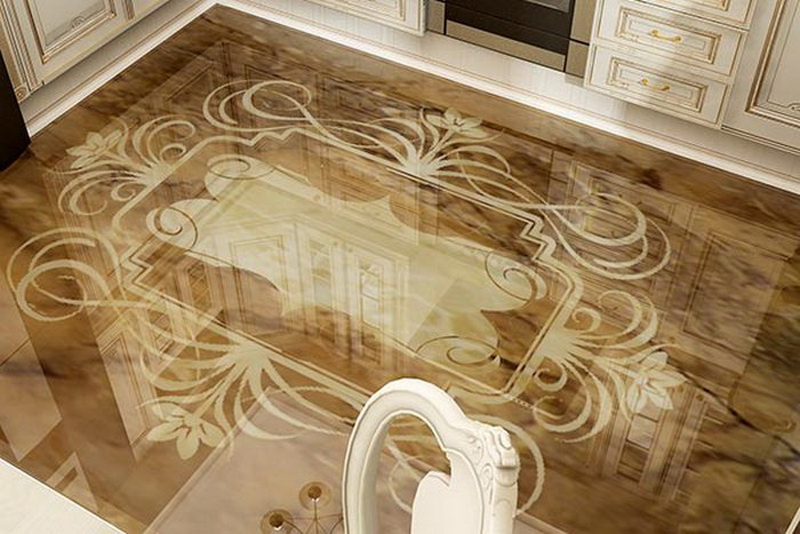
But, if the question is what is best for the kitchen - this is the most convenient material. It is not susceptible to moisture, temperature and oil, is easy to maintain, does not scratch and lasts more than 20 years.
